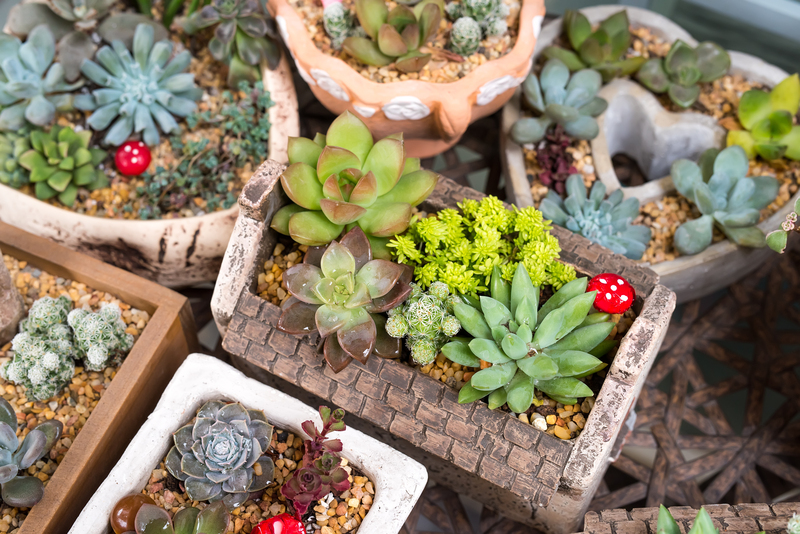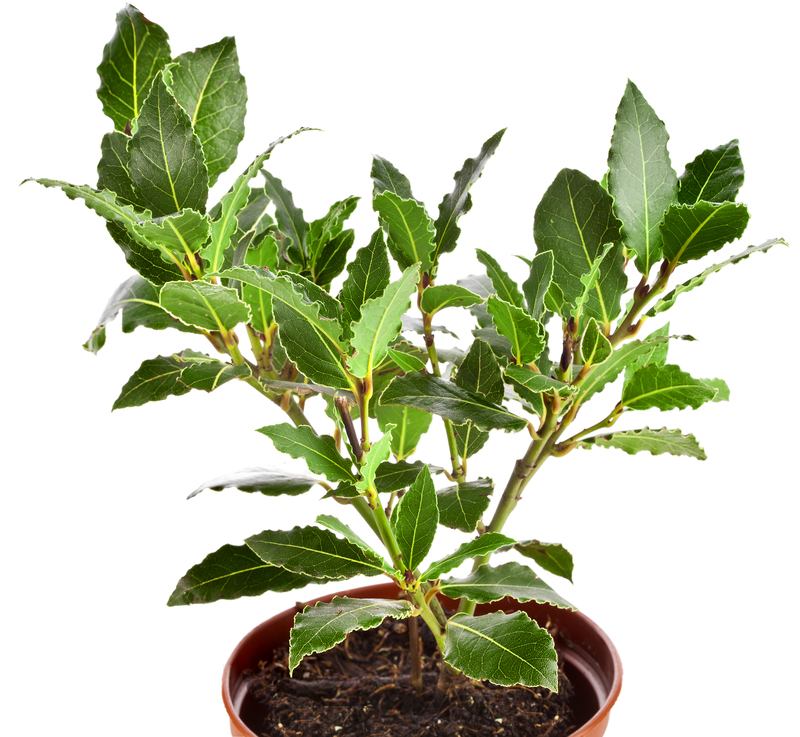Orchids Made Easy: A Guide for Beginners
Posted on 25/09/2025
Orchids Made Easy: A Guide for Beginners
Unlock the secrets to successful orchid growing with our comprehensive, reader-friendly guide crafted especially for beginners. Discover practical orchid care tips, avoid common pitfalls, and nurture your plants to bloom year-round!
Introduction to Orchids
Orchids have long been admired for their exquisite beauty, vibrant colors, and diverse shapes. While they're sometimes considered high-maintenance houseplants, growing orchids can actually be easy and rewarding with the right guidance.
If you've ever wondered how to grow orchids easily or felt intimidated by their reputation, this guide was written just for you. With our step-by-step advice and simple explanations, you'll soon have a home filled with healthy, blooming orchids.

Understanding Orchids: Types and Basics
What Is an Orchid?
Orchids belong to the Orchidaceae family, which is one of the largest and most diverse in the plant kingdom. With over 25,000 species and 100,000 hybrids, orchids adapt to various climates and settings, from rainforests to your living room.
The Most Popular Orchids for Beginners
If you're new to the world of orchids, choosing an easy-to-care-for variety is essential. Here are some of the best orchid species for beginners:
- Phalaenopsis (Moth Orchid): Known for long-lasting blooms and minimal requirements -- perfect for first-timers!
- Dendrobium: These orchids thrive indoors and have attractive, upright stems with clusters of flowers.
- Cattleya: Famous for their showy, fragrant flowers and resilience.
- Oncidium (Dancing Lady Orchid): Recognized for their profuse sprays of small blooms resembling dancing figures.
Essential Orchid Care for Beginners
Choosing the Right Orchid
The first step in making orchid growing easy is picking the right plant. Look for orchids with healthy, green leaves, and firm roots. Avoid plants with shriveled or blackened roots, spots, or wilted leaves.
Selecting Orchid Pots and Potting Mix
Orchids don't grow in soil like typical houseplants. Instead, they require a special potting medium that allows for excellent drainage and airflow. Common orchid mediums include:
- Bark chips
- Sphagnum moss
- Coconut husk
- Perlite
Choose pots with plenty of drainage holes. Clear plastic pots are especially helpful for beginners to monitor root health and moisture levels.
Light Requirements for Orchids
Light is critical for successful orchid care. Most beginner-friendly orchids, like Phalaenopsis, prefer bright, indirect light. Direct sun can scorch leaves, while too little light hampers growth and blooming.
- East or west-facing windows are ideal.
- If leaves turn dark green, the orchid may need more light.
- Yellowing leaves can indicate too much light.
Watering Orchids the Easy Way
One of the most common mistakes is overwatering. Orchids prefer to dry out slightly between waterings, and soggy roots can lead to rot. As a rule of thumb:
- Water once a week during active growth (spring/summer).
- Reduce watering in fall and winter.
- Check by sticking a finger an inch into the pot -- water only if the medium feels dry.
Always use room-temperature water and avoid letting the plant sit in water.
Humidity and Temperature for Growing Orchids Easily
Orchids thrive in a humid environment, ideally between 40% and 60% humidity. Here's how to boost humidity:
- Place a tray of water with pebbles under your orchid (but not touching the base).
- Use a humidifier in drier climates.
- Mist the leaves (avoid the flowers) occasionally when air is very dry.
Optimal temperatures usually range from 60-80?F (16-27?C). Avoid sudden drafts and keep orchids away from heating vents.
Feeding and Fertilizing Orchids
Fertilize orchids every 2-4 weeks using a balanced, water-soluble orchid fertilizer or a "weakly, weekly" approach (using dilute fertilizer more frequently). Never fertilize dry roots -- water first, then feed.
Orchid Repotting and Maintenance
How Often Should You Repot Orchids?
To make orchid care and maintenance easy, repot your plant every 1-2 years or when:
- The potting mix breaks down and stops draining well.
- Roots spill over the edge of the pot.
- You notice root rot or pests.
It's best to repot right after flowering. Gently remove old media, trim dead roots, and transfer your orchid to a new container with fresh medium.
Common Orchid Problems and How to Fix Them
Root Rot and Overwatering
Signs: Mushy, black, or yellow roots; wilted leaves.
- Remove the orchid from its pot.
- Trim away affected roots with sterilized scissors.
- Repot in fresh, dry media and reduce watering.
Leaves Turning Yellow
Yellow leaves can indicate several issues, including too much sunlight, underwatering, or natural leaf shedding.
- If lower leaves yellow, it's often normal aging.
- If all leaves are yellowing, check your watering and light exposure.
No Blooms or Flower Spikes
If your orchid is healthy but not flowering, adjust light, check temperature changes (they often stimulate blooming), and make sure the plant is not overfed.
- Phalaenopsis especially like a 10-15?F nighttime temperature drop to encourage blooming.
Pests and Insects
Common pests include mealybugs, spider mites, and scale insects. Remove pests manually with a cotton swab dipped in alcohol and treat severe infestations with insecticidal soap.
Beginner Tips for Stress-Free Orchid Growing
- Start simple: Choose beginner-friendly orchids like Phalaenopsis.
- Don't fear repotting: It's easier than you think and crucial for plant health.
- Let there be light (but not too much): Observe leaf color and condition.
- Orchid care is forgiving: Orchids can often recover from mistakes if you act quickly.
- Enjoy the process: Watch for new roots, leaves, and the excitement of your first blooms!
Orchid Myths Debunked
- Myth: Orchids are difficult and only for experts.
Fact: Many types of orchids are easy and forgiving, perfect for beginners! - Myth: Orchids need to be watered with ice cubes.
Fact: Cold water can shock roots; room temperature water is best. - Myth: All orchids are tropical and need high heat.
Fact: Most do well at normal household temperatures.
Frequently Asked Questions About Orchids
How Long Do Orchids Bloom?
Most beginner orchids like the Phalaenopsis can bloom for up to three months with the right care.
Can Orchids Grow Without Soil?
Absolutely! Orchids are epiphytes, meaning they often grow on trees in nature and thrive best in airy, well-draining media, not soil.
Do Orchids Need Special Fertilizer?
For easy orchid care, use any balanced, water-soluble fertilizer labeled for orchids.
Should I Cut Off Old Flower Spikes?
Once blooms fade, you can trim back the spike to the first healthy node (for a chance at rebloom), or cut it off completely to encourage new growth.
Easy Orchid Decorating Ideas
Now that you know how to grow orchids easily, why not add a touch of beauty around your home? Here are a few simple ideas:
- Place several moth orchids on a windowsill for a vibrant, floral display.
- Use orchid arrangements as living centerpieces in dining and living rooms.
- Hang mini orchids in bathrooms (with good light) for a spa-like ambiance.

Conclusion: Orchids Can Be Easy!
With the right knowledge, orchid growing becomes enjoyable and almost effortless. Whether you're just starting out or want to improve your technique, remember that patience and observation are key.
Embrace the journey, and your orchids will reward you with beauty year after year. With these orchid care tips for beginners, you're well on your way to becoming an orchid expert!
Further Resources
- American Orchid Society: Culture Sheets
- Orchid Care for Beginners (Penn State Extension)
- Royal Horticultural Society: Orchids
Ready to start? Grab your first orchid and enjoy the magic!

